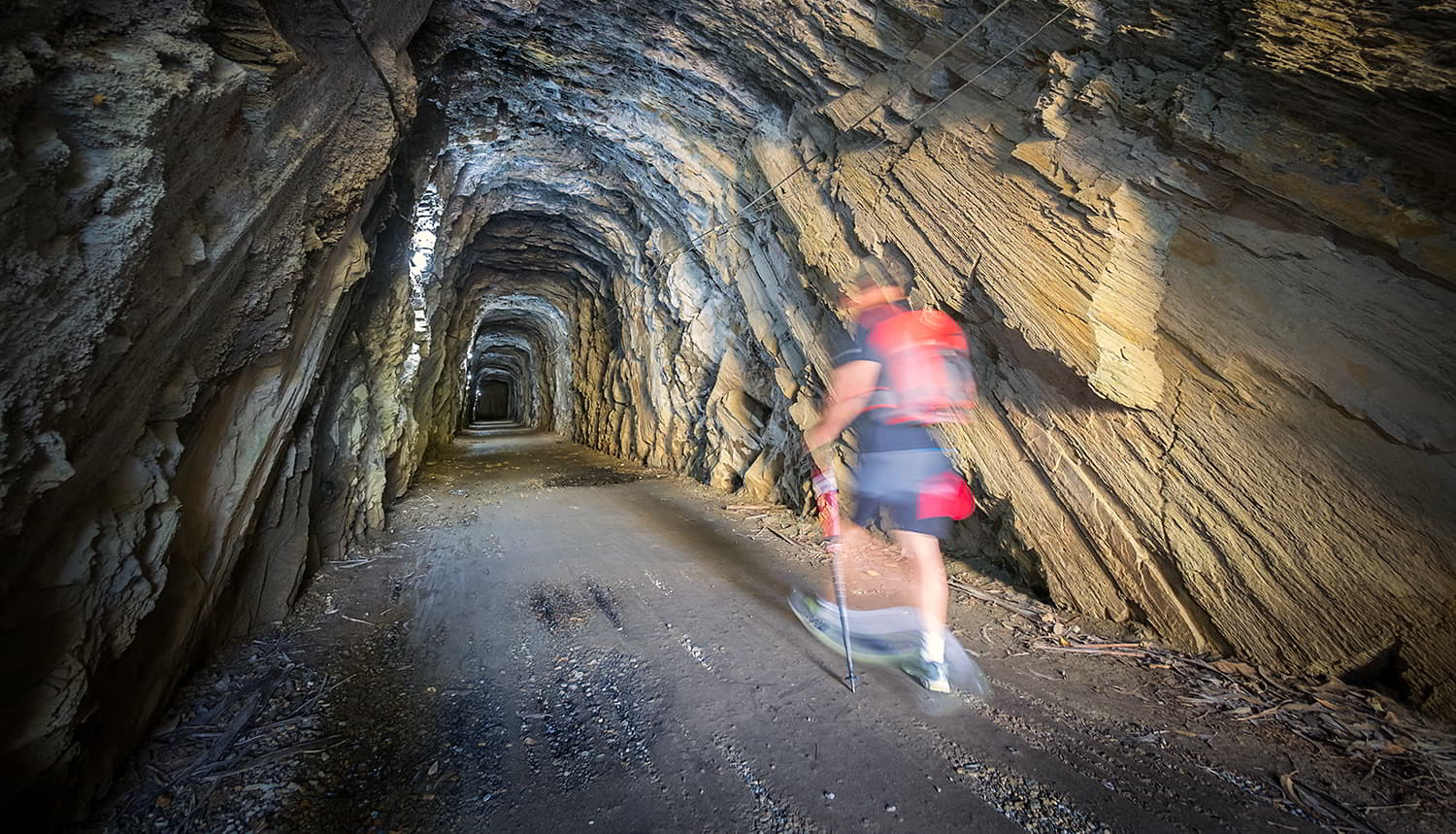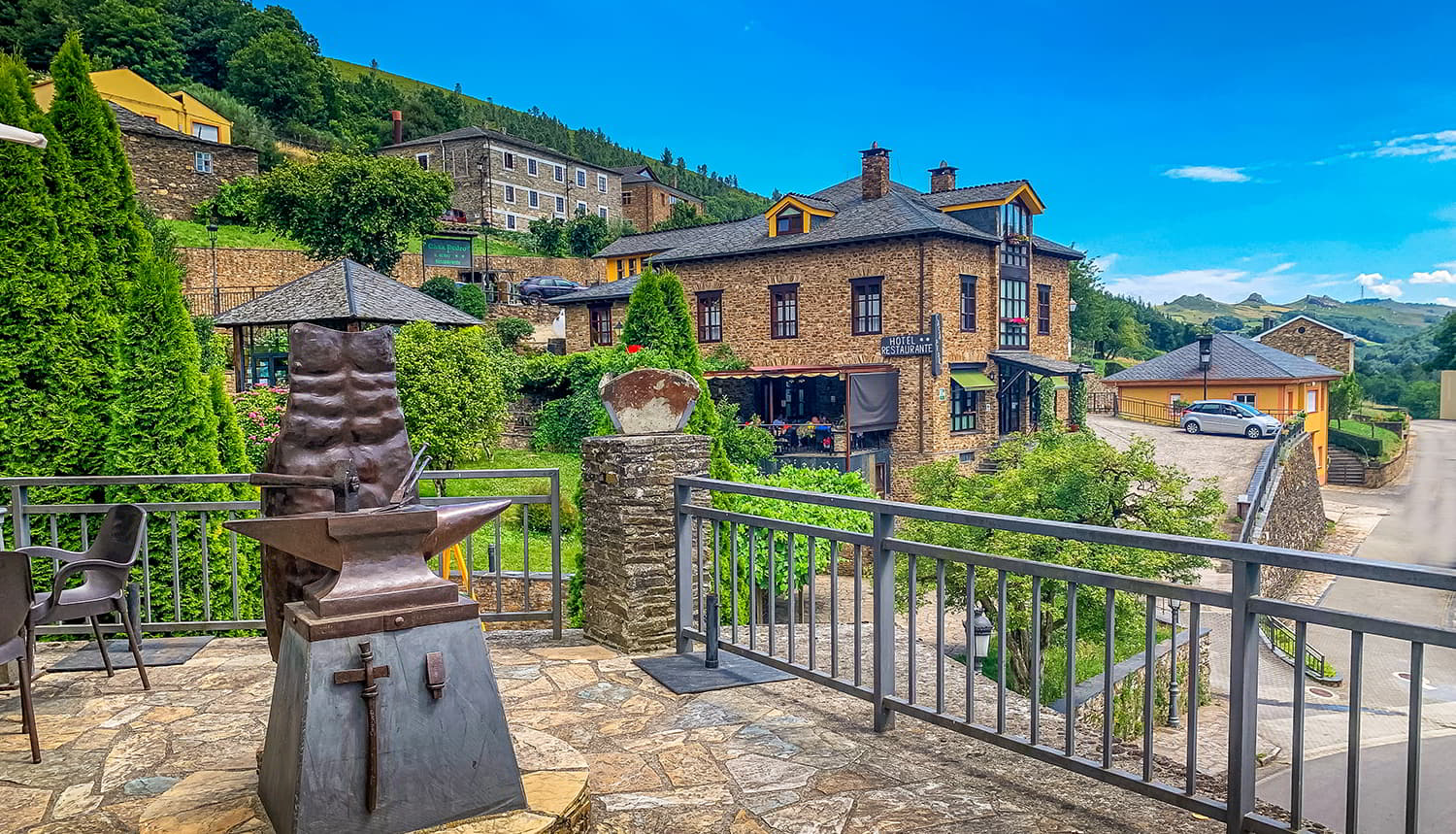Back 5 hiking trails to enjoy the charm of Oscos-Eo
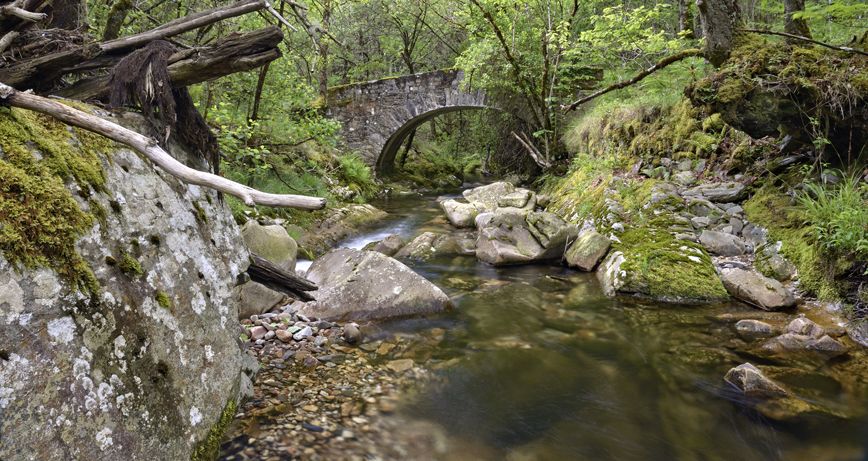
5 hiking trails to enjoy the charm of Oscos-Eo
The Oscos-Eo region, a Biosphere Reserve, offers visitors a wide variety of walking routes to enjoy the beauty of a unique landscape.
The first Biosphere Reserve in Spain shared by two Autonomous Communities is that of Río Eo, Oscos and Terras de Burón, an area that in Asturias stretches from Castropol, overlooking the Cantabrian Sea, to the gentle hills of Santa Eulalia de Oscos.
These gentle mountains are the cradle of a large number of routes on foot, along the banks of rivers, ending in waterfalls or simply in peaceful landscapes where you can stroll under the branches of leafy chestnut and oak trees.
Rural Asturias, the one that goes from the "praos" to the small mountains, unfolds before the visitor in this region, without forgetting the surprise of finding on our way the vestiges of man's attempts to take advantage of Nature as a source of energy.
To better enjoy a getaway to the West of Asturias, we present a small selection of five hiking routes in Oscos-Eo, simple and many of them suitable for the whole family.
Railway Route (San Tirso de Abres) PR - AS300
Active tourism in mountain biking or canoeing, sport fishing, a legendary waterfall (on the Pena del Encanto Route) or river landscapes are some of the charms of San Tiso, winner of the Exemplary Town of Asturias Award (2011), where the Railway Route that connected passengers and goods from the coast to the interior is located.

The railway was a symbol of progress in the 19th century, but between the end of the 20th century and the 21st century many of the routes, which linked small towns or industrial or mineral extraction areas, have been abandoned in favour of road transport.
This abandonment has also become a benefit for the traveller, as in places such as San Tiso the old mining railway that ran from 1903 to 1964 between Villaodrid and Ribadeo has been converted into a comfortable hiking route.
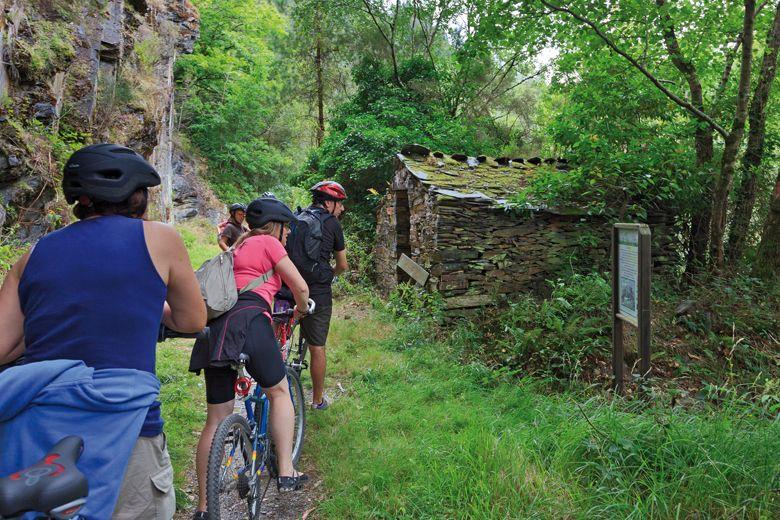
The route, which enters Galicia, has hardly any gradients and includes passing through several tunnels, an abandoned hydroelectric power station (although some of the original machinery can still be seen inside) and some bridges. A word of caution and a piece of advice: look both ways when crossing the N-640 road and take a torch with you, or don't go without a mobile phone battery so that you can use your own, as not all the tunnels have lighting (although they make up for it by being very wide and high).
Distance: 7 + 7 km
Time: 4 hours approx.
Difficulty: Easy
Starting point: Google Maps
More information: San Tirso de Abres Town Council
Wikiloc: Route layout
Water Route (Taramundi) PR - AS17
Taramundi was a pioneer of rural tourism in Spain in the 1980s (some of you reading this would not have been born yet). It did not rest on its laurels, and still offers more than enough reasons to guarantee a successful weekend getaway to this area: the famous knives of Taramundi have the Museum of Cutlery; the daily life of the poor and the wealthy is reflected in the items on display in the Ethnographic Museum of Os Esquíos; in Os Castros there are the remains of a pre-Roman settlement, and the El Mazonovo Mills Museum provides an insight into the importance of water resources for the life and survival of the inhabitants, as well as the Os Teixóis Ethnographic Complex (with all kinds of traditional hydraulic devices in operation), where the Water Route ends, which I will explain below.
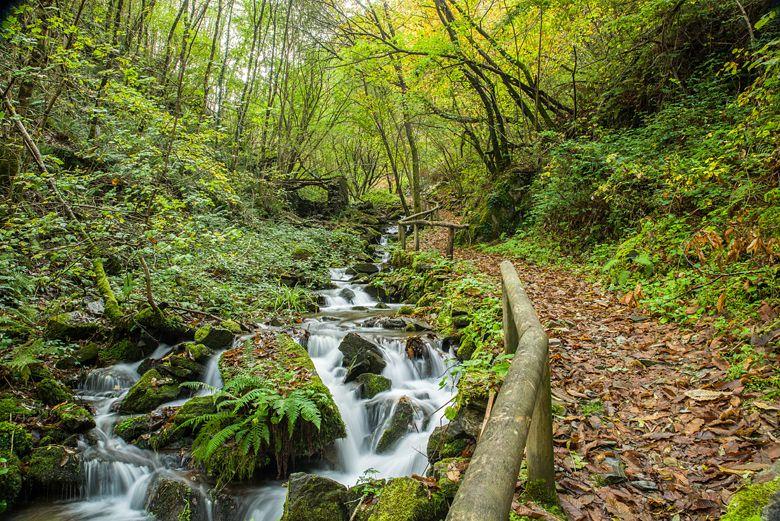
We can leave the car in the car park above the Museo de los Molinos de El Mazonovo (where there are 19 of them in operation), the largest of its kind in Spain. We follow the road for a few metres, after leaving it behind, before finding, well signposted, the slope that leaves it and along which, parallel to the River Turia, we begin the route itself.
We will find a rest area very soon, when we cross the stony Escaderna Bridge, but I can't understand its use if you do this route, unless you decide to do it the other way round (following the road - or a path as a greener option - to the Ethnographic Complex of Teixóis and returning to Taramundi through the interior).
There are three points that I consider of main interest on the route, the Salgueira waterfall (which makes us leave the route to see it and which was practically dry at the end of October, although it is a beautiful and neglected detour), Os Esquíos (where an artisan cutler survives), and Os Teixóis (an ethnographic site with flour mill, whetstone, power station, fulling mill, mallet and forge).
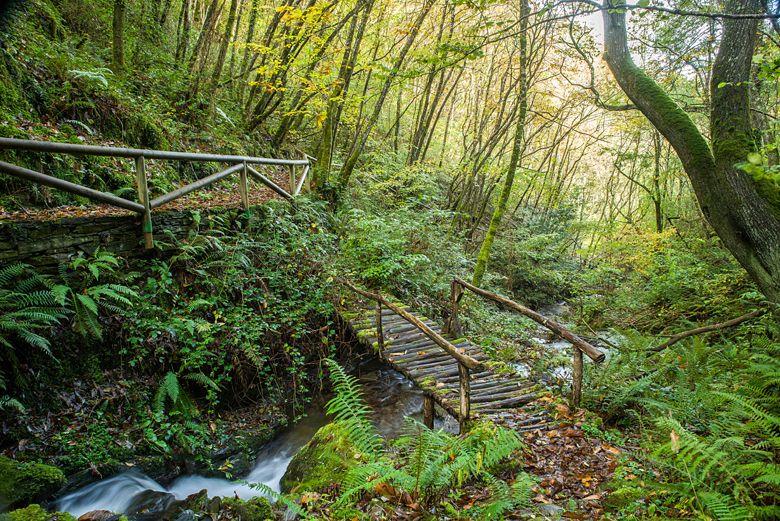
There is also the possibility of not going directly to Teixóis from Os Esquíos but taking a short detour to the village of As Veigas. Make the decision, depending on the time you have left on the route, in the shade and sitting at a small fountain at the fork.
Distance: 14 km
Time: 4,5 hours approx.
Difficulty: Easy
Starting point: Google Maps
More information: Taramundi Town Council
Wikiloc: Route layout
Seimeira route (Santa Eulalia de Oscos) PR- AS116
Exemplary Town of Asturias in 2016, along with San Martín and Villanueva de Oscos - given that this prized award was given to all three towns together -, Santalla is home to the Sargadelos Museum's Birthplace House Museum. Much more than a collection of items from his life, the house is a true and passionate look at everyday life in the 18th century, with rooms that not only faithfully reproduce a kitchen or a bedroom, but many of its pieces are originals from the 19th and 20th centuries, explained by a knowledgeable guide, Iker, who knows each of them and their functions. And if you want to go a step further in understanding a traditional trade that barely survives in the 21st century, a visit to the smithy of the Ethnographic Ensemble of El Mazonovo is a must.
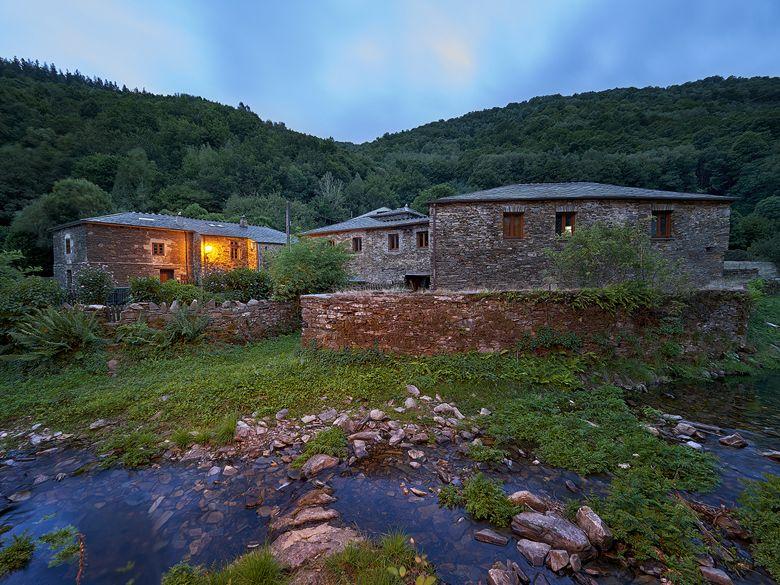
Pumares is a small rural village with, like so many others in the region, stone houses and slate roofs. Almost exclusively dedicated to rural tourism, it is also the starting point of a route that brings together the three things that, separately or together, you can find when hiking in Oscos: a riverbed, the remains of houses and a waterfall.
From Pumares we leave civilisation behind us on a path where it does not abandon us, or tried to do so at one time. Stone walls, protected today by mosses and ferns, and at one time protectors of crops, accompany us intermittently along the path.
Most of the path runs parallel to the River Agüeira, a silent but not silent witness to the fact that in the now demolished village of A Ancadeira, which we will cross, there was once human life.
Almost at the end of the path we can take a break in the large recreational area of Valle del Desterrado. If you want to know the reason for its name, I won't reveal the reason or the tragic history behind it, but an information panel right there does.
Further on, a wooden bridge is the turn-off for the road to the village, also abandoned, of Busqueimado, 1.5 km away. I recommend going to see it on the way back from the waterfall, which is nearby, and only if you have time.
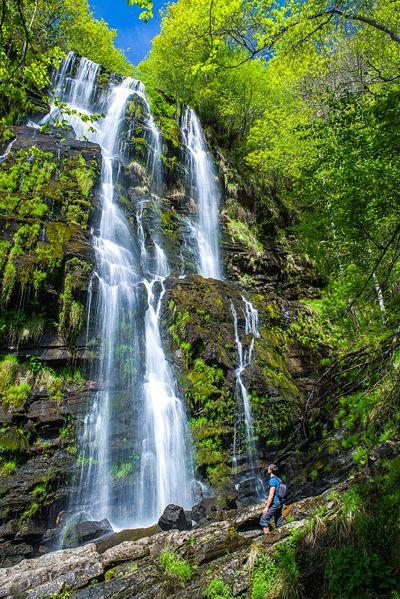
About 300 m beyond this fork, the path continues parallel to the river but through lush vegetation. The sound of the waterfall is the first thing you notice, and it is only when you navigate your way through the rocks that you finally find yourself at the base of the waterfall that you can appreciate its 30m height.
For the more restless, and now entering the realm of individual decision, if you go back to the point where we were offered to reach Busqueimado there is a small improvised and unofficial path that goes to the top of the lower of the two sections of the waterfall (you can therefore extend the route here and then return to the same point of detour to continue the original route).
Be very careful and watch your step if you decide to complete the route in this way.
Distance: 6.5 km
Time: 3 hours apx
Difficulty: Easy
Starting point: Google Maps
More information: Asturias Tourism
Wikiloc: Complete route
Silencio Route (Villanueva de Oscos) PR - AS209
Exemplary Town of Asturias in 2016 - along with Santa Eulalia and San Martín de Oscos - Villanueva de Oscos has one of the most beautiful and best located monasteries I have seen in a long time. A baroque building with an impressive façade and walls, which can be visited, with the added advantage that throughout the year various cultural events and festivals are organised there, such as the Festa dos frailes, concerts of all kinds, theatrical performances, street markets, etc. In short, Villanueva is an example of an ancient monastery with contemporary uses and uses.
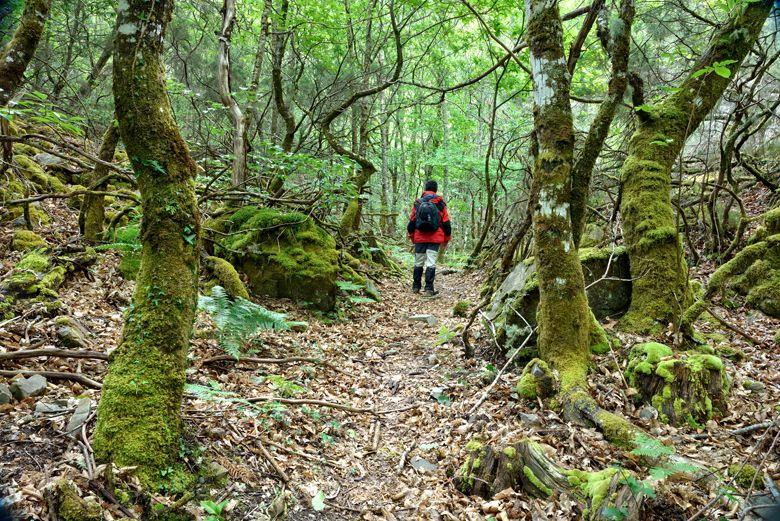
In Villanueva de Oscos you can also visit the installations of several old iron and gold mines, an Ecomuseum of Bread, practice geocaching and go on hiking routes, such as the Silence Route.
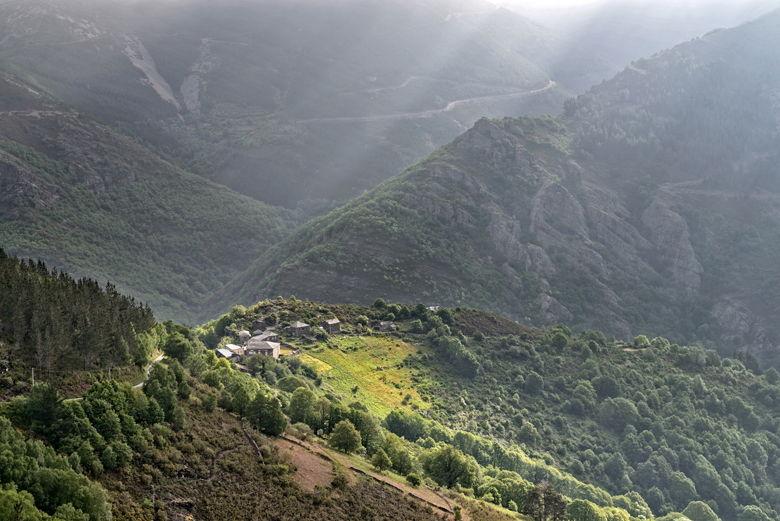
The silence to which the circular route refers is not broken even by the modern windmills that we will find on the surrounding peaks at the beginning of the route. The silence begins at the starting point of the route, the semi-abandoned village of San Cristuebu.
Although we can leave the car at the indicated point further on (if you have an SUV, it is the ideal moment to take advantage of its height above the ground and drive it up to the "pavement"), it is possible that you will not be walking alone, as a couple of affectionate dogs will accompany you even beyond the village chapel.
Under birch and oak trees, walking along the foothills of the Sierra de la Bobia mountains that surround the village, the highest point of this route is the 811 m of the Pico de Balongo, a beautiful vantage point overlooking the surrounding countryside.
I have indicated, and more people do, that this route is "difficult" only because of a couple of sections of steep climbs and descents. Some will find it rather "complicated" and for others it will be "moderate", but I prefer to err on the side of safety when it comes to classifying it.
Distance: 12 km
Time: 5,5 hours apx
Difficulty: Difficult
Starting point: Google Maps
Further information: Villanueva de Oscos Town Council
Wikiloc: Route layout
Mon Route (San Martín de Oscos) PR- AS114
Exemplary Town of Asturias in 2016, with (together with Santa Eulalia and Villanueva de Oscos, among the rural peace and quiet landscapes that San Martín de Oscos offers to the visitor, I would like to highlight a beautiful building. The 18th century Palacio de Mon is a majestic stone ensemble in a small settlement, guarded by its coats of arms and a legend. A visit can be arranged through the Tourist Office, which will also serve as an excuse to set off on the Mon Route.
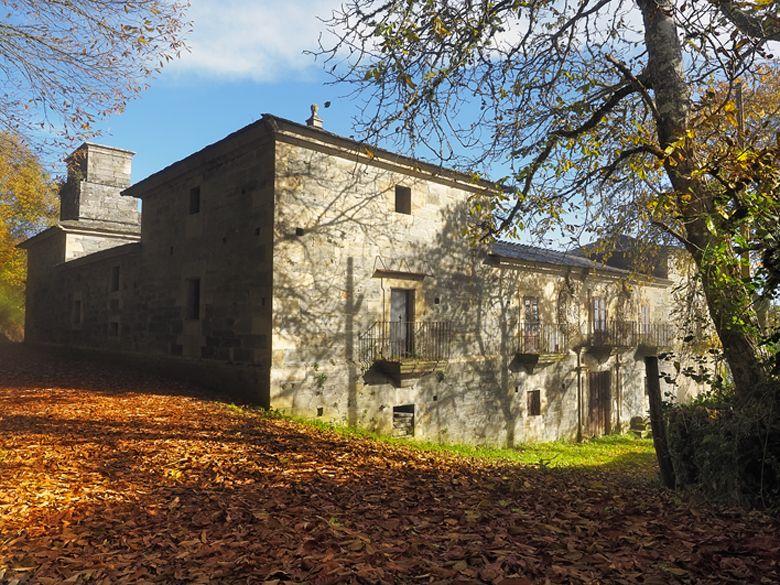
Depending on the time available, this route has three possible starting points: Samartín (capital of the council), A Reboqueira or Mon itself.
When I did it, because the scenery between San Martín de Oscos and A Reboqueira was farmland, and because the section between A Reboqueira and Mon could be done by road and shortened (to enjoy the other sections more), I started in Mon.
Just before reaching the village, at the end of a straight road, there is a small parking area. Going down the road you enter the village of Mon, literally four houses and a closed palace (one building but two architectural ensembles, from the 16th and 18th century) of private property.
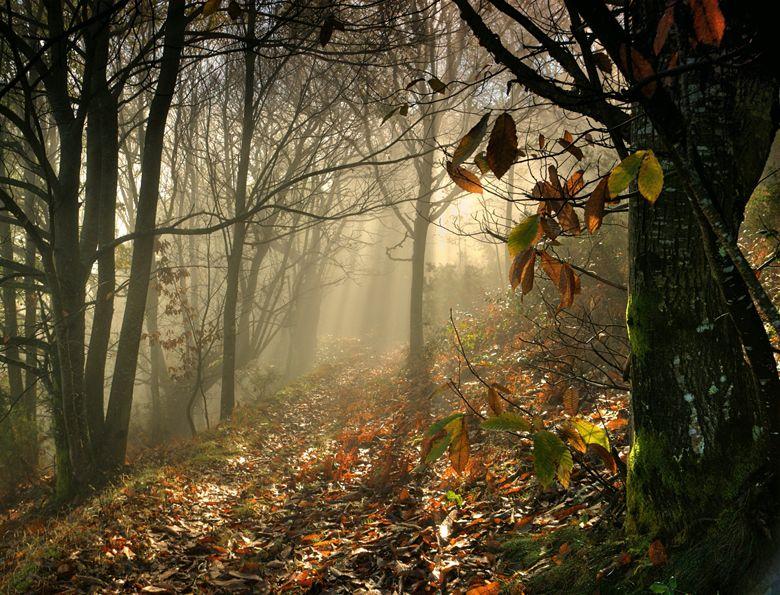
Once we have crossed the village, a fork in the road offers us the possibility of continuing on to Mazo de Mon (1.5 hours i/v), but first it is advisable to take the other option, to the nearby Chapel of Santa Marina, the oldest in the council.
The small detour takes us to the humble village chapel. Protected by wooden railings, we find it tucked away, although it is battered by the elements and by the uncivilised who only know how to remember its name if they carve it into the wood.
We return to the path but not before catching the first glimpse of the first views, if a sea of fog does not cover them, towards small villages in the mountains such as Francos or Pesoz. The path is protected by natural barriers of ferns and artificial barriers of "chantos" (stone slabs nailed to the ground), so don't be in a hurry to reach the end and enjoy the walk.
Distance: 12 km (from A Reboqueira)
Time: 5 hours apx
Difficulty: Difficult
Starting point: Google Maps
More information: San Martín de Oscos Town Hall
Wikiloc:Route layout
Chestnut, oak, beech and birch trees and the sound of water flowing in streams, with the occasional remains of crumbling stone houses, will be our companions on the hiking routes in the Oscos-Eo region.
This area of Asturias, which embraces Galicia on the Eo River, offers visitors gentle and peaceful landscapes for a getaway that includes, of course, visits to ethnographic sites to better understand the life of those who live among these mountains.
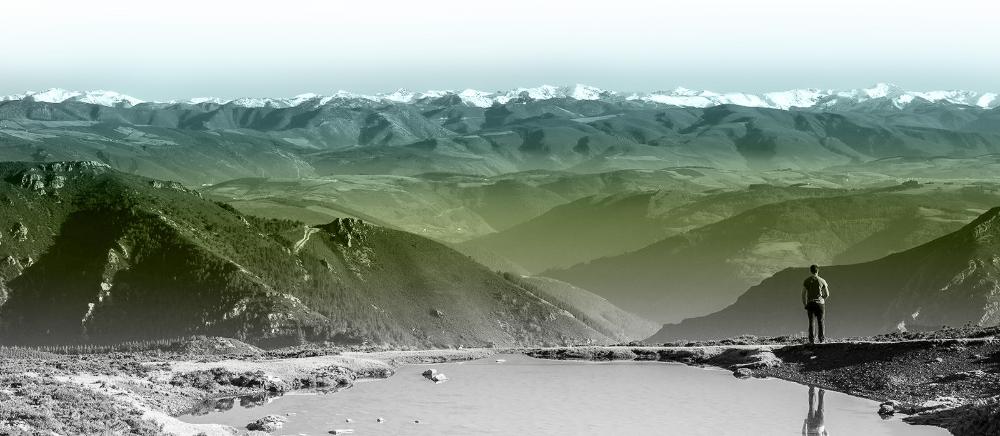
Subscribe to our newsletter and take advantage of offers, discounts, and news
Subscribe

